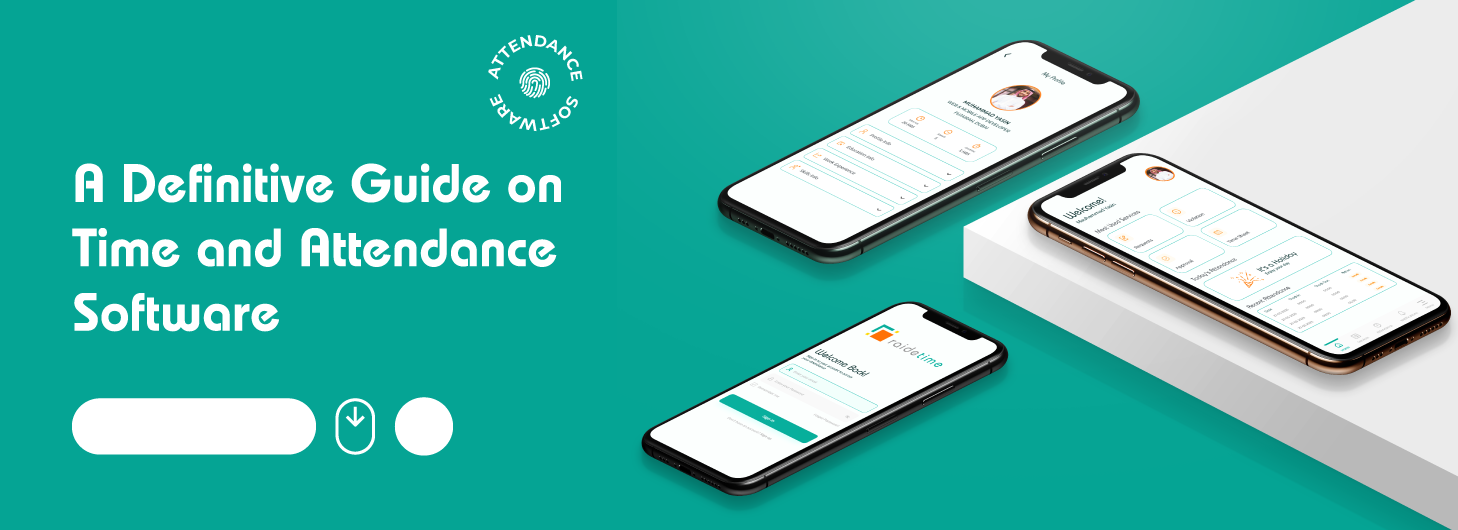Written By
Zubair Shah
2024-Nov-29
Lost Time vs Smart Tracking: How Timesheets Transform Workforce Management
How do we drive operational
excellence? A question looms in the head of every business leader and manager.
Optimizing processes for the peak performance of team members and achieving
team excellence in business is a dream every business owner wants to make
practical.
But how? Numerous techniques,
tactics, and tools exist to maximize a team member's output during working
hours.
One of these tools is the timesheet.
Formerly known as a time book, it was first used as a paper book in the 19th
century to record working hours, days, and a task. Employees would stamp their
clock-in and clock-out on the paper to mark their attendance in the available
hours. It was the guiding source to determine working wages.
This paper-based timesheet started
to decline with the technological revolution. The spreadsheet and time
attendance started to replace it. This system is more robust, streamlined, and
scalable.
Modern organizations now use
digital-driven timesheets to address the unique challenges of workforce
management. Unlike the outdated paper-based timesheet. Digital timesheet is
more data-driven, easy to use, and transparent.
But how timesheet optimize
workforce, save times and ensure operational efficiency. In this article we discuss
the use of timesheet. Its importance, types and how timesheet can transform
your workforce management
Understanding
Timesheets
What Is a
Timesheet?
A timesheet is a structured
tool—manual or digital—used to document the hour’s employees spend on tasks,
projects, or shifts. The data table in the timesheet, save clock-in and clock-out
time and date of a particular employee.
It fosters accuracy, transparency, and accountability across organizations.
Without a timesheet system in place,
businesses often deal with missed hours, payroll inaccuracies, and a lack of
transparency that disrupts workflow and erodes trust.
Originating as handwritten logs in
the 19th century, timesheets have evolved into robust time-tracking software
and mobile apps.
Why Are Timesheets
Important?
Every skilled professional knows the
value of the right tool in getting work done. As a business owner, you
understand that managing a team without a proper tool is not just
difficult—it’s nearly impossible.
Team management goes far beyond
assigning tasks to individuals. It’s about fostering collaboration, ensuring
smooth communication, and keeping everyone aligned toward shared goals. A smart
business owner recognizes this complexity.
A strong team without the right tool
lacks direction, while even the best tool is meaningless without a team to
utilize it. The two must work in harmony.
When you combine a capable team with
the right tools, you unlock the ability to manage your operations with ease and
run your business with unparalleled efficiency. Together, they form the
foundation of a well-oiled, thriving organization.
A timesheet is a trusted ally in
resource planning. It reduces the employee chances of lost hours and smartly
tracks every team member's presence. For HR and operations managers, timesheets
are more than logs; they’re decision-making tools. They ensure:
- Accurate work hours tracking.
- Schedule Shifts with more clarity
- Transparency in payroll management.
- Insights for team efficiency and planning.
Types of Timesheets
and Formats.
Monthly Timesheets
- Monthly timesheet is used for payroll and performance
tracking. It records and reviews an employee’s total work hours and
activities across an entire month,
Weekly Timesheets:
- It captures work hours and tasks completed within a
week. The manager used it for progress review and short-term planning.
Bi-weekly
Timesheets:
- Some organization has a bi-weekly payroll cycle. They
use bi-weekly timesheets to ensure accuracy and fair compensation.
Daily Hourly
Timesheets for Employees:
- Focused on logging hourly activities for employees to
monitor productivity and task-specific work daily.
Daily Timesheets
for Management:
- Tailored for managerial roles to track high-level
activities, meetings, and decision-making tasks each day.
- Project Timesheets
- Used to allocate and track time spent on specific
projects, helping to evaluate resource utilization and project timelines.
Manual vs Digital
Timesheets
Manual Timesheets:
- Paper-based and prone to errors.
- Require manual calculations for payroll.
Digital Timesheets:
- Automated and accessible via apps or cloud-based
platforms.
- Offer real-time updates and integrations.
For HR managers aiming for accuracy
and scalability, digital systems like an employee timekeeping app are the clear
choice.
How to Fill Out a
Timesheet
Filling out a timesheet is a
straightforward process, whether you’re using paper or software. Here’s a quick
guide:
Name and Surname: Add the full name of the employee for accountability.
Date: Enter the date for each entry, ensuring accuracy for
payroll and records.
Work Activities: Log tasks or responsibilities to clarify how time was
spent.
Hours Worked: Record daily hours to track productivity and patterns.
Total Hours: Summarize weekly or monthly hours to calculate overtime if
needed.
Notes: Add details like overtime approvals, leave requests, or
special adjustments.
The Use of
Timesheets Across Industries
Timesheets are designed to meet the
unique needs of diverse sectors, simplifying workforce management.
Healthcare
In health care timesheet ensure
shift accuracy for medical staff. It preoverlaps and supporting seamless
handovers to keep patient care uninterrupted.
Government Agencies
Track work hours effectively,
fostering transparency and accountability in managing public services.
Retail and
Hospitality
Manage dynamic shifts effortlessly,
ensuring staff availability aligns with business demands to deliver exceptional
customer experiences.
Education
Simplify tracking of faculty and
administrative hours, ensuring fair workload distribution and focus on
nurturing students.
Banking
Maintain compliance and operational
efficiency by monitoring work hours and streamlining timekeeping processes.
Whether through an online timesheet
or a timesheet mobile app, they serve as essential productivity tools.
Advantages of
Timesheet Usage
How Timesheets
Benefit Employers and Employees
Without proper timesheet tracking,
employers face resource inefficiencies, scheduling conflicts, and payroll
errors. Similarly, employees experience confusion over priorities, disputes
over pay, and increased manual effort.
Timesheet benefits for
Employers:
- Improved time allocation and resource planning.
- Simplified payroll processing with accurate records.
- Schedule Shifts with clarity and avoid scheduling
conflicts
- Data-driven insights for forecasting and budgeting.
Timesheet benefit for
Employees:
- Clarity on work expectations.
- Assurance of fair compensation.
- Tools like a clock-in clock-out software reduce
manual effort.
How Timesheets
Improve Payroll Processing
Timesheets integrate directly with
payroll systems, ensuring no hours go unaccounted for. Digital tools like timesheet
management software eliminate human error, saving time and money.
Best Practices for
Timesheet Management
Set Clear Goals
Communicate the purpose of
timesheets to employees. Highlight their role in ensuring fair compensation and
improving workflows. Use training sessions to familiarize teams with time-tracking
software and ensure smooth adoption.
Avoiding Common
Errors
Common mistakes include:
- Incomplete or delayed entries.
- Relying on outdated manual systems.
Digital tools like timesheet mobile
apps or a clock in clock out software mitigate these errors by automating
reminders and validations.
Ensuring Compliance
and Accuracy
To maintain data accuracy:
- Standardize processes with a timesheet management
software.
- Regularly audit timesheets for discrepancies.
- Invest in secure systems with encryption to protect
sensitive employee data.
Addressing Key
Questions
What Tools Are Best
for Managing Timesheet Data?
For HR and operations managers,
tools like time keep apps or timesheet management software are
indispensable. Look for features like automation, real-time reporting, and
integration with payroll systems.
raidetime has an autofill timesheet, that streamlines the mundane processes.
Are There
Industry-Specific Formats?
Yes. Some industries often use
project-specific templates, while other relies on shift-based formats. Tailored
solutions ensure relevance and accuracy.
What Security
Measures Are Important for Digital Timesheet Tools?
Ensure systems have:
- Data encryption.
- Role-based access control.
- Regular security updates.
Protecting employee data builds
trust and ensures compliance with regulations.
Conclusion and Next
Steps
Timesheets are more than administrative
tools; they’re a gateway to efficiency and transparency. By choosing the right
format, avoiding common pitfalls, and leveraging technology, business owners and
managers can revolutionize workplace management.
Actionable Steps:
- Begin with a timesheet template that matches your
team’s needs and get to know into the concept of timesheet,
- Implement a timesheet management software to automate
processes.
- Train employees on tools like a timesheet mobile app or
timekeeper app.
- Regularly review and optimize your system for
continuous improvement.
With the right approach, timesheets
can be a cornerstone of productivity and collaboration. Embrace their potential
to create a well-managed, efficient workplace.



